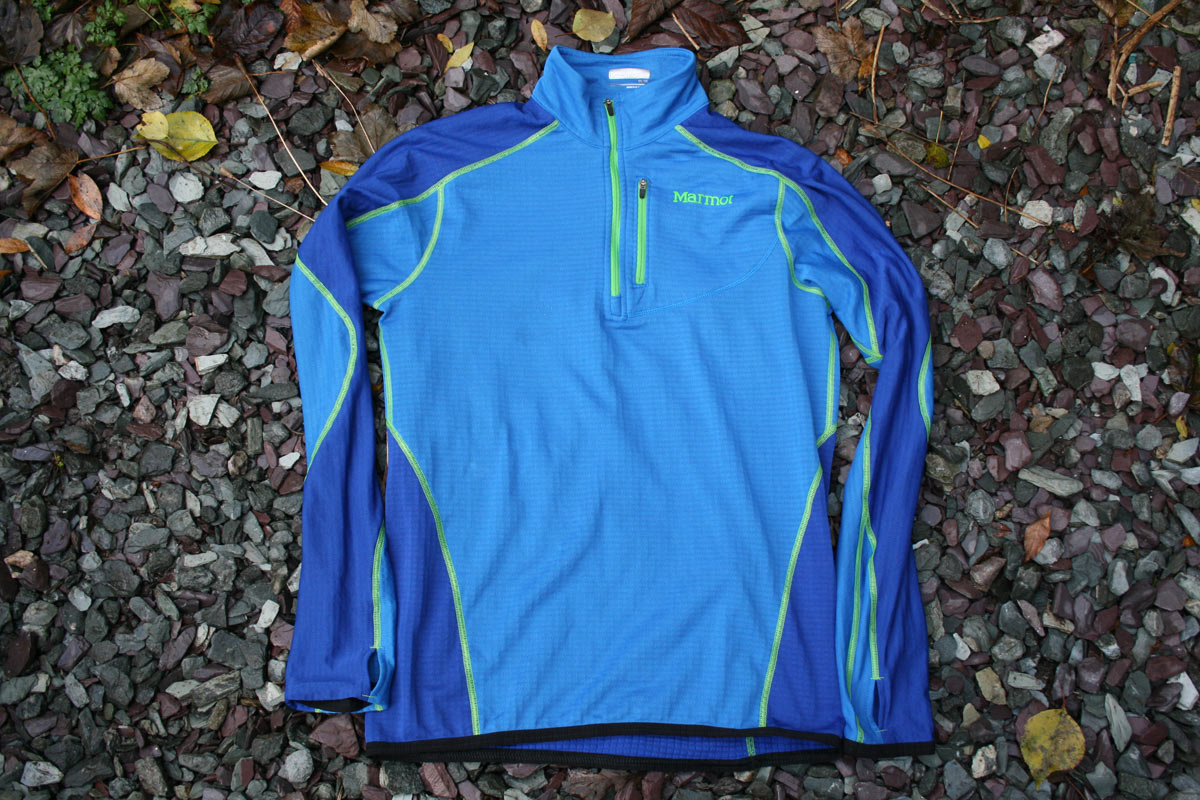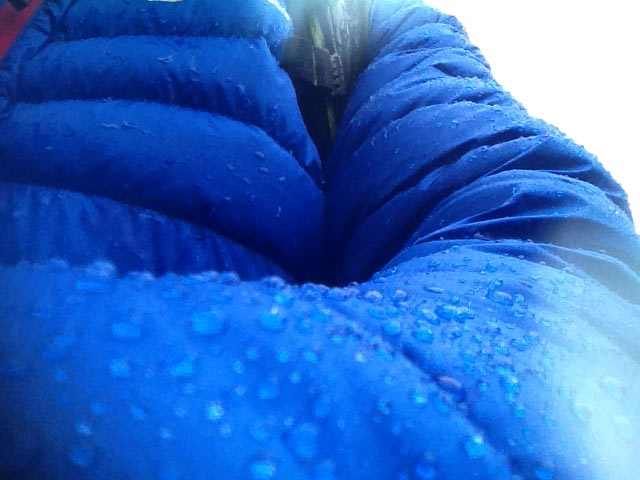The North Face Thermoball Jacket – £150 / 345g

Review
The Thermoball jacket uses market-leading, wet conditions friendly PrimaLoft synthetic insulation but in a completely new form. The PrimaLoft Thernoball fill is in the form of tiny balls which, says TNF means it performs as well in warmth to weight terms as 600 fill weight down, but is better at handling knock-about use and getting wet when it will retain more loft.
The little balls aren’t without their problems though: because they’re balls, they roll about easily, so the lightweight 20D fabric has to be quilted to keep them in place, which reduces warmth slightly and ups weight just a little. It’s also cut in a slightly boxy way, which won’t suit all users. Having said that, it’s definitely warm for a synthetic jacket of its weight – 335g in a medium – and not far off down.
Verdict
We were skeptical at first, but the Thermoball technology really does seem to give down-like warmth to weight properties but with PrimaLoft’s impressive indifference to water. Yes, it does cost as much as a similar down jacket and yes, hydrophobic down has narrowed the gap slightly but for reliably wet conditions we’d still always go synthetic and this is the best balance of synthetic warmth and weight we’ve used.
It is expensive and we’d prefer a less boxy cut, but if the fit works for you and your bank account can stand the strain, then this is a no-nonsense, cold and wet-friendly lightweight insulated top that you can use over or under other layers as you choose.
Back to top








